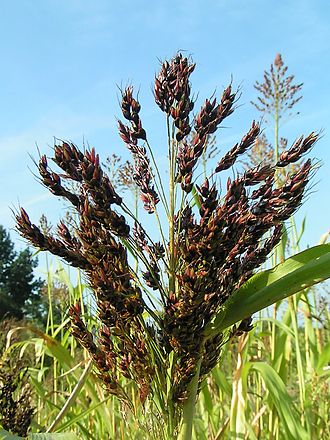- Species
- Tools
- Expression Profiles
- Compare profiles
- Create heatmap
- Export expression levels
- Expression Specificity
- Compare specificities
- Find specific profiles
- Co-expression Networks
- Create custom network
- Find enriched clusters
- Search

Sorghum bicolor, commonly called sorghum and also known as great millet, broomcorn, guinea corn, durra, imphee, jowar or milo, is a grass species cultivated for its grain, which is used for food for humans, animal feed, and ethanol production. Sorghum originated in Africa, and is now cultivated widely in tropical and subtropical regions. Sorghum is the world's fifth-most important cereal crop after rice, wheat, maize, and barley, with 59.34 million metric tons of annual global production in 2018. S. bicolor is typically an annual, but some cultivars are perennial. It grows in clumps that may reach over 4 m high. The grain is small, ranging from 2 to 4 mm in diameter. Sweet sorghums are sorghum cultivars that are primarily grown for forage, syrup production, and ethanol; they are taller than those grown for grain.
Sorghum bicolor is the cultivated species of sorghum; its wild relatives make up the botanical genus Sorghum.
From Wikipedia.